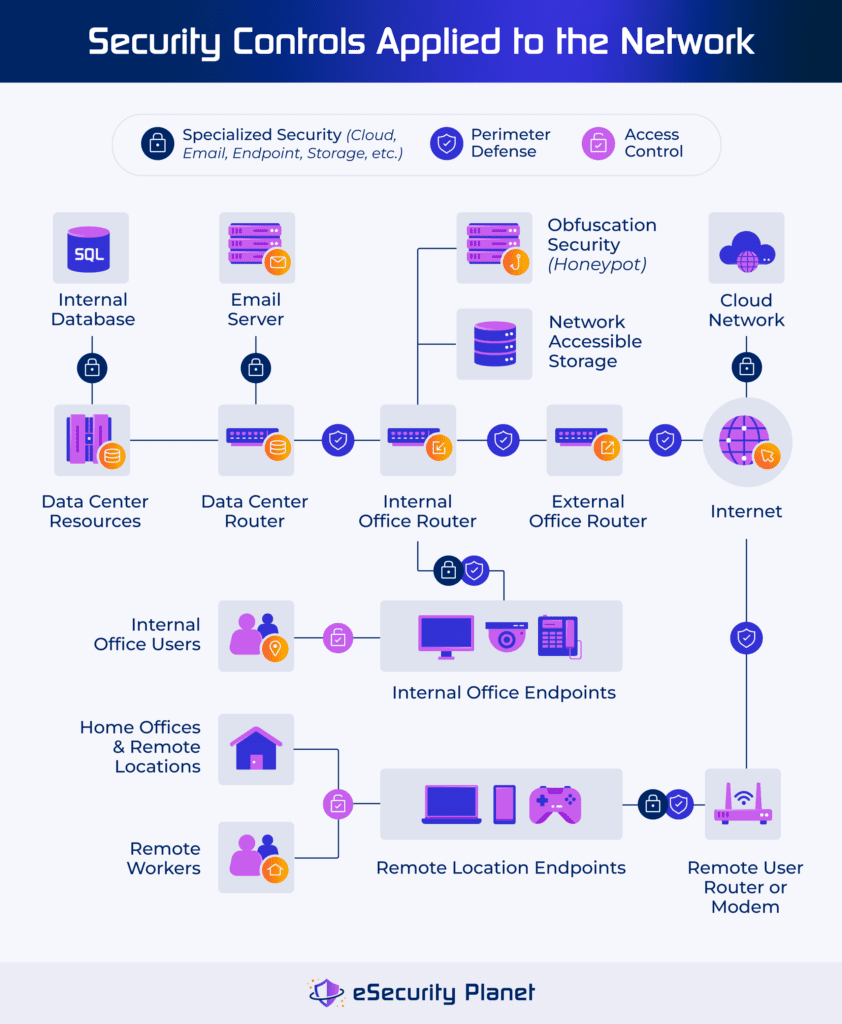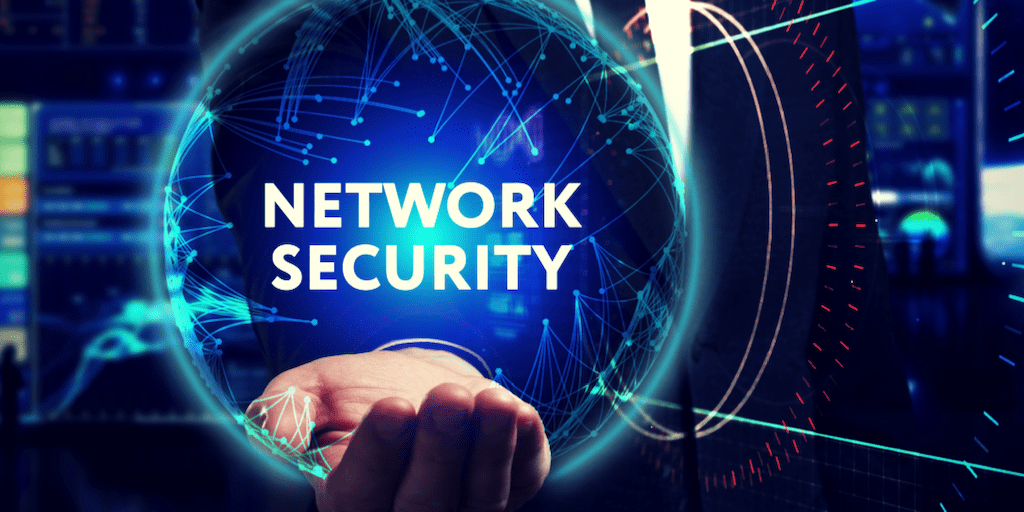Data and Network Security: Key Strategies to Safeguard Your Digital Infrastructure
Data and Network Security: Key Strategies to Safeguard Your Digital Infrastructure
Blog Article
Exactly How Data and Network Safety And Security Safeguards Against Arising Cyber Hazards
In a period marked by the rapid evolution of cyber threats, the importance of information and network protection has actually never ever been a lot more noticable. Organizations are progressively reliant on sophisticated protection procedures such as encryption, gain access to controls, and positive tracking to safeguard their electronic assets. As these threats become extra complicated, understanding the interaction between data security and network defenses is necessary for reducing risks. This conversation aims to discover the vital components that strengthen a company's cybersecurity position and the strategies needed to stay in advance of prospective vulnerabilities. What continues to be to be seen, nevertheless, is exactly how these actions will develop despite future obstacles.
Understanding Cyber Dangers

The ever-evolving nature of technology consistently presents new vulnerabilities, making it vital for stakeholders to stay cautious. People might unconsciously come down with social design strategies, where enemies control them into divulging delicate details. Organizations face distinct challenges, as cybercriminals usually target them to make use of beneficial data or disrupt procedures.
Furthermore, the increase of the Net of Things (IoT) has increased the assault surface area, as interconnected devices can serve as entrance factors for enemies. Recognizing the relevance of durable cybersecurity techniques is important for minimizing these risks. By fostering a detailed understanding of cyber threats, organizations and individuals can execute efficient strategies to protect their digital possessions, making certain strength in the face of an increasingly intricate threat landscape.
Key Parts of Data Protection
Ensuring data security needs a multifaceted approach that encompasses various key parts. One basic component is data file encryption, which changes delicate details right into an unreadable layout, accessible only to accredited customers with the proper decryption tricks. This acts as a critical line of protection versus unapproved access.
Another vital part is gain access to control, which controls who can watch or manipulate information. By applying stringent user verification protocols and role-based accessibility controls, companies can lessen the danger of insider hazards and data violations.

Furthermore, data masking methods can be utilized to safeguard sensitive information while still enabling its usage in non-production settings, such as testing and development. fft perimeter intrusion solutions.
Network Protection Approaches
Carrying out durable network safety strategies is vital for guarding an organization's digital infrastructure. These approaches include a multi-layered method that consists of both software and hardware solutions designed to secure the stability, confidentiality, and schedule of data.
One crucial part of network safety is the release of firewall programs, which act as a barrier in between trusted inner networks and informative post untrusted outside networks. Firewall programs can be hardware-based, software-based, or a mix of both, and they assist filter incoming and outward bound traffic based upon predefined safety and security rules.
Furthermore, intrusion discovery and prevention systems (IDPS) play an essential function in keeping track of network website traffic for questionable tasks. These systems can inform administrators to potential violations and act to alleviate dangers in real-time. On a regular basis covering and upgrading software application is additionally critical, as susceptabilities can be manipulated by cybercriminals.
Additionally, applying Virtual Private Networks (VPNs) ensures safe remote accessibility, encrypting data transmitted over public networks. Segmenting networks can minimize the strike surface and contain prospective violations, restricting their influence on the total infrastructure. By embracing these approaches, companies can effectively fortify their networks against news emerging cyber dangers.
Finest Practices for Organizations
Developing ideal techniques for companies is essential in preserving a solid protection posture. An extensive method to information and network safety begins with routine danger analyses to recognize susceptabilities and potential risks. Organizations ought to implement robust accessibility controls, making certain that just authorized personnel can access sensitive information and systems. Multi-factor verification (MFA) ought to be a typical need to improve safety and security layers.
Additionally, continual worker training and awareness programs are crucial. Workers ought to be enlightened on identifying phishing attempts, social engineering techniques, and the significance of sticking to safety protocols. Normal updates and patch administration for software application and systems are also crucial to protect versus known susceptabilities.
Organizations must establish and check event feedback plans to make certain preparedness for possible breaches. This consists of establishing clear interaction channels and functions throughout a safety incident. Information encryption ought to be employed both at rest and in transportation to guard sensitive information.
Finally, performing periodic audits and compliance checks will certainly aid guarantee adherence to appropriate laws and established policies - fft perimeter intrusion solutions. By adhering to these ideal practices, organizations can substantially boost their strength against emerging cyber risks and safeguard their vital properties
Future Trends in Cybersecurity
As organizations navigate a significantly complicated digital landscape, the future of cybersecurity is positioned to progress dramatically, driven by changing and arising modern technologies hazard standards. One noticeable fad is the assimilation of expert system (AI) and artificial intelligence (ML) right into security frameworks, enabling real-time threat discovery and feedback automation. These modern technologies can assess vast amounts of data to identify abnormalities and possible breaches much more efficiently than standard approaches.
One more critical fad is the surge of zero-trust style, which calls for constant verification of customer identifications and device security, no matter pop over to these guys of their place. This method reduces the threat of expert risks and boosts security against exterior attacks.
Furthermore, the raising fostering of cloud services demands robust cloud protection approaches that deal with unique susceptabilities associated with cloud environments. As remote job ends up being a permanent component, safeguarding endpoints will certainly also come to be critical, bring about a raised concentrate on endpoint detection and response (EDR) options.
Last but not least, regulative compliance will certainly continue to form cybersecurity practices, pressing companies to adopt a lot more strict information protection steps. Embracing these fads will be necessary for organizations to fortify their defenses and browse the advancing landscape of cyber risks successfully.
Conclusion
In conclusion, the implementation of robust information and network protection procedures is vital for organizations to safeguard versus emerging cyber threats. By utilizing encryption, accessibility control, and efficient network safety and security strategies, companies can substantially decrease vulnerabilities and secure delicate info.
In an era noted by the rapid advancement of cyber dangers, the importance of information and network safety and security has actually never ever been a lot more noticable. As these threats end up being more intricate, understanding the interaction in between data safety and security and network defenses is important for minimizing dangers. Cyber hazards encompass a vast range of destructive activities aimed at endangering the confidentiality, stability, and availability of networks and information. An extensive strategy to data and network safety starts with regular risk evaluations to identify vulnerabilities and prospective threats.In final thought, the execution of robust data and network protection measures is crucial for organizations to secure versus arising cyber risks.
Report this page